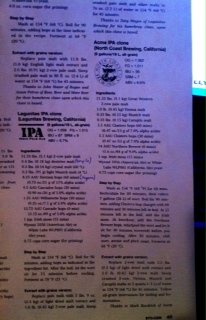wranglerx16
Well-Known Member
- Joined
- Nov 10, 2011
- Messages
- 95
- Reaction score
- 0
Hi
This is my first non kit beer, I got all the ingredients for the lagunitas ipa clone by tony magee of lagunitas brewing
I was wondering if anyone had any tips or pointers?
I can add the recipe if u want
This is my first non kit beer, I got all the ingredients for the lagunitas ipa clone by tony magee of lagunitas brewing
I was wondering if anyone had any tips or pointers?
I can add the recipe if u want




